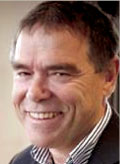 A well-balanced approach to financial management and an eye to cost-cutting has put Council in a stronger financial position. We continued to consolidate our finances in 2012/13 and were pleased to have reduced public debt by $11 million to $89.6 million at year end. This, coupled with a further streamlining of services, smarter procurement and assessment policies, and the restructuring of administration meant we were able to contain the annual rate demand to within inflation levels. Maintaining a prudent approach to financial management helped Council lift its ranking in the Local Government League Table, which ranks the performance of New Zealand’s 67 territorial authorities in terms of their financial sustainability and community affordability. The Far North District Council was ranked 37th in the table in 2013 after being ranked 55th last year. This is an impressive achievement we can take a lot of pride in.
A well-balanced approach to financial management and an eye to cost-cutting has put Council in a stronger financial position. We continued to consolidate our finances in 2012/13 and were pleased to have reduced public debt by $11 million to $89.6 million at year end. This, coupled with a further streamlining of services, smarter procurement and assessment policies, and the restructuring of administration meant we were able to contain the annual rate demand to within inflation levels. Maintaining a prudent approach to financial management helped Council lift its ranking in the Local Government League Table, which ranks the performance of New Zealand’s 67 territorial authorities in terms of their financial sustainability and community affordability. The Far North District Council was ranked 37th in the table in 2013 after being ranked 55th last year. This is an impressive achievement we can take a lot of pride in.
Improving sewerage services in the district was a big focus for Council during the year. Capital projects started or completed included new sewerage collection systems at Opua and Awanui. About 300 properties will be serviced by the new systems which pipe sewage from existing household septic tanks to public treatment plants for final disposal. The $7.7 million investment in the two communities has largely been funded through government subsidies with only a minor financial impact on individual households. The new systems are an efficient and cost-effective way of managing sewage and will minimise the potential for up to 180 cubic metres of untreated sewage a day from contaminating our rivers and estuaries. The Opua sewerage project was recognised at the annual NZ Contractors’ Federation Awards with a citation for the innovative and cost-effective solutions that resulted from collaboration between Council, contractors, designers and the community. This approach typifies the innovation and invention we are applying to major contracts. Council also began developing an innovative community consultation exercise to support a long-awaited expansion of sewerage services in Kerikeri. A ‘talking toilet’ in the main street and a toilet roll mascot were among the unorthodox tactics Council used to focus public attention on the problem of failing household sewerage systems. This high-profile campaign, which got underway at the end of the financial year, represented a major milestone for the Council in terms of how it engages with the community. Good progress was also made on a new water supply for Kaitaia. Council has been investigating an opportunity to take water from the Sweetwater Aquifer since a drought in the summer of 2009/10 reduced flows in the Awanui River to a trickle. Council entered negotiations to buy a bore field above the aquifer in the last year and expects to commission the water supply in mid-2014. Council also restructured the way streetlights are maintained and began replacing lights with energy-efficient bulbs and lamps, a move which is expected to eventually save ratepayers about $30,000 a year.
The most recent independent customer satisfaction survey commissioned shows user satisfaction with Council services and facilities overall remaining at about 80%, and a significant (14%) improvement in those scoring Council in the “very satisfied” category. However, there has been a downward trend in satisfaction levels related to the local roading network. We believe this is largely due to the reduced levels of subsidy available while the Government continues to concentrate its spend on roads it considers to be of national significance. This has meant we have initiated virtually no new capital projects for the third consecutive year. Our maintenance and renewal programmes will keep local roads at a reasonable standard in the short term. However, a prolonged absence of capital funding will inevitably lead to a general decline in road standards in the longer term. This has now been reflected in the latest customer satisfaction survey where the percentage of respondents satisfied with the local roading network dropped from 57% to 51%. Council’s contact centre has also fielded a growing number of complaints about the standard of the district’s roads.
The customer satisfaction survey also showed a decline in public perception of aquatic facilities which had already been identified as a problem in a comprehensive independent survey of the district’s future aquatic needs. Council will discuss the recommendations of this report, which elected members received in June, with community boards and schools before they confirm any implementation plan.
Overall, we have consolidated our financial performance, improved the way we deliver services and made significant progress on capital projects that will protect the coastal environment from pollution and provide the district’s largest town (Kaitaia) with a reliable water supply.

David Edmunds – Former Chief Executive



